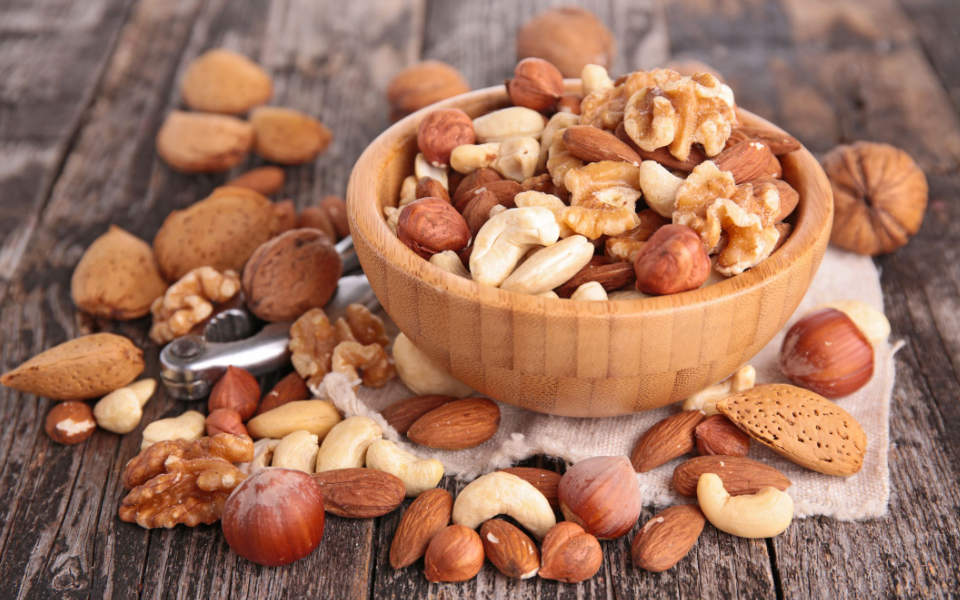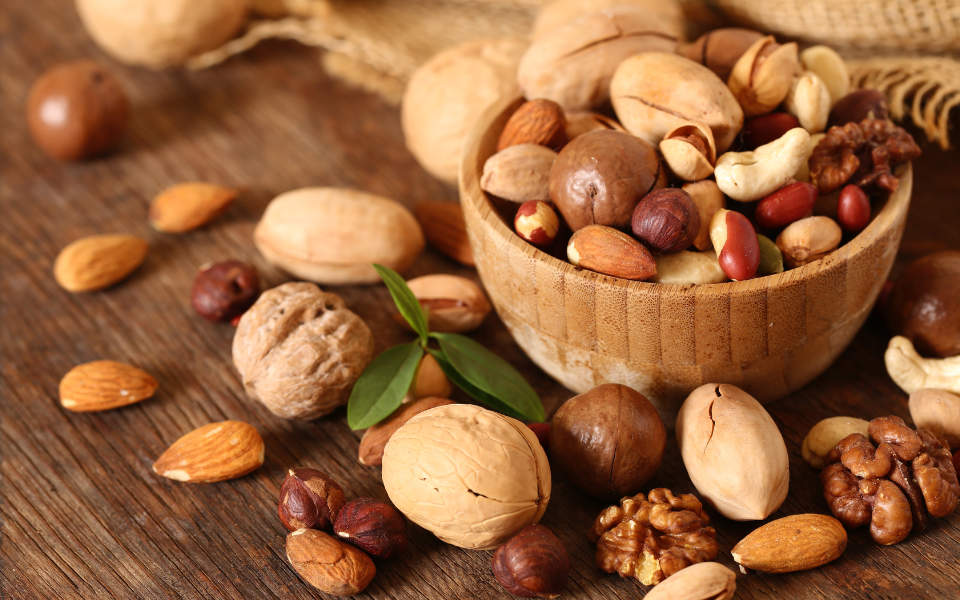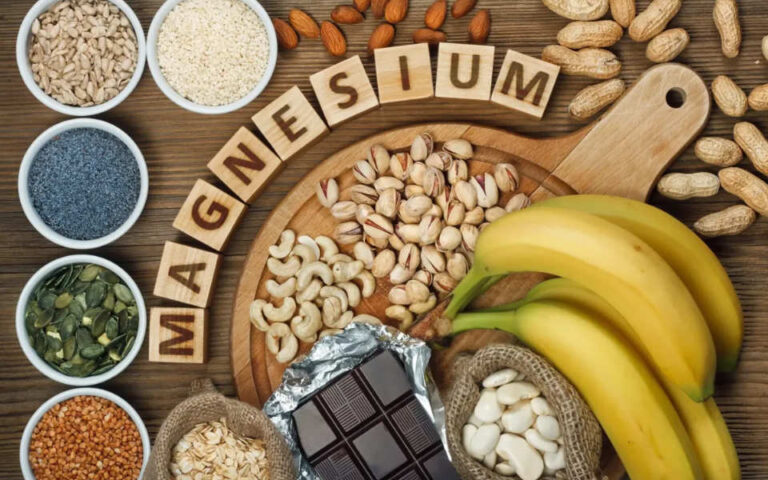It’s no surprise that everybody’s going nuts over nuts. Not only are they very tasty, but they’re very nutritious as well. They’re also very versatile fares, as you can eat them in the form of healthy nut snacks – even that of savoury nut recipes. If you’re looking to boost your health the delicious way, then here’s everything you need to know about the healthiest nuts to eat.
A Brief History of Nuts
A recent archaeological dig has shown that nuts have been part of the human diet for as long as 780,000 years ago. The ancient site revealed our early ancestors’ predilection for various types of nuts, including almond, water chestnut, prickly water lily, pistachios, and acorns. They were found in depressions carved by nutting stones, which they used to open these nuts’ shells.
The same type of evidence was found in European and Native American sites that date back to about 8,000 years ago. These early ancestors, on the other hand, feasted on chestnuts, beechnuts, hickory nuts, and walnuts.
More than just being an item of nourishment, nuts were revered in some societies as well. The early Romans considered walnuts as the food for the gods, while the ancient Chinese heralded it as one of the five sacred nourishments.
Thanks to the early voyagers, different nut varieties are now grown throughout the world. From Hazelnuts in Oregon and Washington, Macadamia in Hawaii, and Cashews in India and Africa, everybody can now enjoy the tasty health benefits of nuts.
Where Do Nuts Come From?
Technically speaking, a nut is a type of fruit with a seed and an inedible hard shell. Most variants are grown in trees. These, of course, are called tree nuts. The most common examples include:
- Almonds
- Cashews
- Chestnuts
- Hazelnuts
- Macadamia nuts
- Pecans
- Pistachios
- Walnuts
- Pine nuts
- Brazil nuts
- Filberts
- Hickory nuts
Notable exceptions include chickpeas and peanuts, the latter of which is actually a legume. The peanut flowers grow above ground, while the edible legumes proliferate underground.
Are Nuts Good For You?

Yes, of course! Each serving of healthy nuts yields the following nutrients:
1. Polyunsaturated and Monounsaturated fats
One of the benefits of eating nuts every day is getting a healthy deal of substances known as ‘good fats’. They help reduce the levels of bad cholesterol, which can increase your risk of heart disease and stroke in the long run. Additionally, they provide nutrients that the body needs to maintain its cells.
Polyunsaturated fats also provide the body with 2 essential fatty acids. One is Omega-3, which can help promote heart health. The other is Omega-6, which is needed to maintain metabolic and reproductive processes. It is also vital for bone and skin health, as well as hair growth.
Which Nuts are Rich in Polyunsaturated and Monounsaturated Fats?
Walnuts have more polyunsaturated fats, while Macadamia nuts are richer in monounsaturated fats.
2. Phytosterols
Also known as plant sterols, these compounds are found in plant cell membranes. With its anti-inflammatory action, it can help prevent certain diseases and cancers. Like the good fats stated above, phytosterols can help lower your risk of cardiac disease as well.
Which Nuts are High in Phytosterols?
- Pistachios – 271 mg per 100-gram serving
- Almonds – 161 mg
- Pecan – 150 mg
- Walnuts – 143 mg
- Cashews – 120 mg
3. Antioxidants
Antioxidants counteract the damaging effects of free radicals. These harmful molecules are produced in the body following exposure to pollution, UV exposure, smoking, or radiation. Without antioxidants, free radicals can accumulate and lead to cancer, heart disease, and other conditions.
Which Nuts are Rich in Antioxidants?
- Walnuts – 220 mmol per 100 grams
- Pecan nuts
- Chestnuts
4. Fibre
Commonly known as roughage, fibre is found in nuts and other plant-based foods. Since the body can’t break it down, it passes through your system undigested. The substance found in nuts is called soluble fibre.
One of the many benefits of nuts and seeds is that it can help prevent constipation, diverticular disease, even colon cancer. Additionally, a Harvard report has shown that those who ate high-fibre food (such as nuts) had lower incidences of breast cancer as well.
More than just promoting digestive health and preventing cancers, soluble fibre can help regulate blood cholesterol and sugar as well. With these effects, fibre plays a major role in reducing heart disease and diabetes risk.
Which Nuts are Rich in Fibre?
- Chestnuts – 5 grams per 100 gram-serving
- Pine Nuts – 3.7 grams
- Almonds – 3.5 grams
- Pistachios – 3 grams
5. Protein
Protein is an essential macronutrient. It is found throughout the body, from the bone to the skin, hair, and muscle. With its 10,000 variants, proteins are responsible for the many chemical reactions in the body.
While meats are good protein sources, plant sources such as nuts with protein are better for the body. As mentioned, these contain good fats – substances that help reduce the levels of LDL cholesterol, a known factor behind heart disease.
Vegetable sources are deemed to be better for diabetics as well. According to another Harvard report, those who ate meat increased their diabetes risk by as much as 50%. On the other hand, those who consumed vegan sources such as nuts high in protein had a lower incidence of diabetes.
Which Nuts Are High in Protein?
- Peanuts – 26 grams per 100 gram-serving
- Pistachios – 20 grams
- Cashews – 18 grams
6. Vitamins and minerals
Vitamins and minerals are substances needed for growth and development.
The body needs 13 types of vitamins, including A, C, D, E, K. The 8 B vitamins – Vitamin B6, Vitamin B12, Riboflavin, Thiamine, Niacin, Biotin, Pantothenic Acid, and Folate – are vital as well.
The major necessary minerals, on the other hand, are calcium, potassium, magnesium, phosphorus, sodium, chloride, and sulphur.
Apart from these, trace minerals such as chromium copper, zinc, iodine, and selenium are needed by the body as well. One of the more prominent minerals is iron, an essential component of haemoglobin. That’s because it plays an essential role in transporting oxygen to the body tissues.
Which Nuts Are High in Iron?
- Pistachios – 14 mg per 100 grams
- Cashews – 6.7 mg
- Brazil nuts – 2.4 mg
- Almonds – 1.1 mg
What are the Top Healthiest Nuts?

As mentioned, nuts contain a lot of nutrients. While all kinds of nuts are good for your health, some are undoubtedly better. If you want to get the best nutrients that these snacks have to offer, then make sure to feast on these healthy nuts:
1. Almonds
Almonds come from the Prunus dulcis tree. Thanks to industrialization, most of the almond nuts sold already have their shells removed. They are best eaten raw or roasted, as they can also be used to make oil, milk, or butter.
For every 1-oz serving of almonds, you get the following nutrients:
- 161 calories
- 2.5 grams of carbohydrates
- 6 grams of protein
- 14 grams of fat, 9 of which are monounsaturated fats
- 3.5 grams of fibre
- 37% of the recommended dietary allowance (RDA) for Vitamin E
- 32% of the RDA for Manganese
- 20% of the RDA for Magnesium
- Trace amounts of Riboflavin, Phosphorus, and Copper
Helps Lower the Risk of Diabetes and Cardiovascular Disease
A study of people with pre-diabetes has shown that eating 2 ounces of almonds daily can lead to better insulin sensitivity (diabetes, after all, is a condition of insulin resistance). It also helped lower the levels of low-density lipoprotein (LDL), the bad cholesterol that can clog your arteries.
Helps Neutralize Damaging Free Radicals
Rich in antioxidants, almonds may help minimize free radical damage to the body. According to one study, daily consumption of almonds can lead to an increase in antioxidant defences. It can also help minimize the signs of oxidative stress in established smokers.
Helps Manage your Appetite
Even science has established that almonds make for the best nuts for weight loss. According to a study, consuming almonds can help reduce a person’s hunger and desire to eat.
As per another study, a low-calorie diet (LCD) with 84 grams of almonds, compared to just LCD, was better in reducing BMI, waist circumference, and fat mass.
2. Cashews
Cashews are kidney-shaped nuts derived from the cashew tree (Anacardium occidentale). A native of Brazil, this nut is now grown in many tropical climates around the world. The best choices are the raw or dry roasted variants, as the salted kinds can be fattening.
As one of the healthy nuts in this list, cashews come with this bevy of nutrients:
- 155 calories
- 9 grams of carbohydrates
- 18 grams of protein
- 12 grams of fat
- 1 gram of fibre
- 67% of the RDA Copper
- 20% of the RDA of Magnesium and Manganese
- 15% of the RDA of Zinc
- 13% of the RDA of Phosphorus
- 11% of the RDA of Iron
- 10% of the RDA of Selenium and Thiamine
Helps Reduce Cholesterol Levels
Like other healthy nuts, cashews are good for the heart. According to a study, consumption of 28 to 54 grams of cashews daily can help manage total cholesterol and LDL levels. Increases in both are known to magnify a person’s risk of heart disease.
Rich in Copper
With each serving containing 67% of the RDA, cashews can help you enjoy the many benefits of copper to the body. As such, copper can help you achieve a healthier immune system, nerves, blood vessels, and bones. Apart from improving iron absorption, copper-rich cashews may help reduce osteoporosis and heart disease risk as well.
Boosts Eye Health
Cashews are rich in Zeaxanthin, a type of antioxidant (carotenoid). It helps defend the eyes from harmful high-energy wavelengths, and as such is vital for keeping the said organ healthy.
3. Pistachios
As the seed of the pistachio (Pistacia vera) tree, this nut is known for its sweet flavour and green colour. A native of Western Asia, Pistachios have been consumed in as early as 7,000 BC. Today, most of the world’s sources are grown in Arizona, New Mexico, and California.
Every 1-oz serving of pistachios contains the following:
- 156 calories
- 8 grams of carbohydrates
- 20 grams of protein
- 12.5 grams of fat
- 3 grams of fibre
- 41% of the RDA for Copper
- 28% of the RDA for Vitamin B6
- 21% of the RDA for Thiamine
- 15% of the RDA for Manganese
Helps Reduce Cholesterol
According to one study, eating pistachios can help reduce cholesterol levels. Results showed that those who ate 2 servings a day demonstrated lower levels of total and LDL cholesterol respectively. High levels of these are known to lead to cardiovascular disease.
Helps Improve Blood Sugar Levels
Pistachios are one of the better nut types for diabetics. According to a study, consumption of 25 grams of pistachios can lead to lower fasting blood glucose. It can also reduce Haemoglobin A1C levels, which is a long-term indicator of blood sugar control. After all, it is the average glycaemic reading for the past 2-3 months.
Rich in Vitamin B6
Also known as Pyridoxine, Vitamin B6 offers many benefits for the body. It may help manage anaemia, as Vitamin B6 is necessary for haemoglobin production. It may also help improve cognitive and mental health, and may even reduce the symptoms of premenstrual syndrome as well.
May Aid in Weight Loss
As one of the best nuts for weight loss, pistachios may help you achieve your goal weight healthily. According to a study, a 12-week consumption of pistachios has led to lower BMI readings in the participants. It also helped reduce triglyceride levels, which further supports pistachio’s beneficial effects on the heart.
4. Walnuts
Walnuts come from the Juglans regia plant, which is known by many as the English or Persian walnut tree. It comes with a mild and earthy taste, with some tangy notes along the way.
As one the healthiest nuts in the list, each serving of Walnuts provides you with the following:
- 182 calories
- 4 grams of carbohydrates
- 4 grams of protein
- 18 grams of fat
- 7 grams of fibre
- 2.5 grams of omega-3 fatty acids
- 39% of the RDA of Magnesium
- 25% of the RDA of Vitamin B6
- 16% of the RDA of Iron
Rich in Antioxidants
Of all the nuts in the list, walnuts yield the most antioxidant content. It has twice the number of polyphenols, which can help in the management of diabetes, heart disease, digestive problems, even weight loss issues. Walnuts are also rich in diarylheptanoids and quinones, which are known for their anti-cancer activity.
Reduces the Risk of Cardiovascular Disease
Heart disease is brought about by many factors, the foremost of which are blood pressure and cholesterol levels. Fortunately, walnuts may help you improve on these. According to a study, walnut consumption can lower LDL by as much as 16%, and blood pressure by 2-3 mm Hg.
Improves Gut Health
Research has shown that daily consumption of 43 grams of walnuts enhances probiotic activity in the gut. These good bacteria help edge out the bad micro-organisms in your system, thereby leading to better digestive health. Through the gut-brain-skin axis, probiotics may also bring about better skin and mental health.
Helps Reduce Your Appetite
If you’re guilty of some unhealthy snacking and binge eating, worry not as walnuts are some of the best nuts for weight loss. A study has shown that a walnut smoothie is better in controlling one’s appetite and feelings of hunger.
5. Pecan Nuts
Pecan nuts are borne by the Carya illinoinensis tree. A native of Northern Mexico and the Southern US, this nut has a unique flavour, described by many as sweet and buttery.
An ounce of pecan nuts contains the following nutrients:
- 193 calories
- 4 grams of carbohydrates
- 3 grams of protein
- 20 grams of fat
- 2.5 grams of fibre
- 13% of the RDA of Iron
- 8% of the RDA of Magnesium
- 2% of the RDA of Vitamin E
Good for the Heart
Like many healthy nuts, pecans can help improve your cardiac health. In one study, a 4-week diet with pecan servings led to decreases in LDL and blood pressure reading.
Helps Reduce Blood Sugar Levels
More than just caring for the heart, the same study has shown that pecans can be beneficial for diabetics as well. Those who consumed pecan regularly showed lower blood glucose levels, which is vital for diabetic management.
6. Macadamia Nuts
While Macadamia nuts are now commercially grown in Hawaii, it is a native of Australia. Produced by the Macadamia tetraphylla tree, it has a rich, buttery flavour that is best paired with coconut, lemon, or coffee.
Each serving of macadamia nuts comes with these nutrients:
- 200 calories
- 4 grams of carbohydrates
- 2 grams of protein
- 21 grams of fat
- 2.5 grams of fibre
- 32% of the RDA of Magnesium
- 20% of the RDA of Iron
- 15% of the RDA of Vitamin B6
Promotes Good Heart Health
According to a study, consumption of 40-90 grams of macadamia nuts for 4 weeks can help decrease inflammation markers in the body.
More than just irritating the blood vessels, inflammation can trigger the growth of plaques as well. When a part of this breaks off, it can clot the arteries, leading to a heart attack or a stroke.
Macadamia nuts are also rich in monounsaturated fats, a substance that helps keep cholesterol levels down. Coupled with its anti-inflammatory action, macadamia’s healthy fats can help you achieve better heart health.
Rich in Magnesium
Magnesium is a nutrient vital for many biochemical reactions in the body. It offers many health benefits, as it can help minimize inflammation, lower blood pressure, and improve insulin sensitivity in diabetics. It’s also good for the brain, as magnesium may help prevent migraines – even some depressive episodes.
Are Nuts Good For Weight Loss?

Yes! Nuts are rich in protein and fibre that keep you fuller for longer. Their calories are lower compared to other snacks as well. For one, most nuts’ calories are particularly low. Good examples include almonds, cashews, and pistachios, which only have 160 kcal per ounce.
While nuts have relatively low-calorie content, some preparations may destroy your diet. Remember: nuts are fattening if they are roasted in oil. So if you want to eat nuts for weight loss, take them raw or dry-roasted.
Nuts for Keto Diet
If you are on Keto, you’ll be glad to know that you can feast on many nut types. Here are the low-carb, high-fat nut mixes that you can eat:
1-oz serving of: Fat Carbohydrates
- Macadamia nuts: 21 grams 4 grams
- Pecan nuts: 20 grams 4 grams
- Brazil nuts 19 grams 3 grams
- Pine nuts: 19 grams 4 grams
- Walnuts: 18 grams 4 grams
- Hazelnuts: 17 grams 5 grams
- Almonds: 14 grams 5 grams
- Peanuts: 14 grams 6 grams
Recipes Using Nuts
Indeed, there are so many benefits of eating nuts every day. While they make healthy snacks, you can use them for cooking as well. Here are some of the delicious yet healthy nut recipes that you ought to try:
1. Peach Gelatin Salad
This vegan nut roast recipe is not only yummy, it’s easy to do as well. For this, all you need are sliced peaches, lemon gelatin, ginger ale, and chopped walnuts.
2. Banana Nut Bread
The star here is the pecan, which is one of the best nuts for protein. Made with large bananas, eggs, and vanilla, this bread is a tasty favourite amongst many.
3. Honey Cinnamon Roll ups
This is one of the nut roast recipes you’ll love eating every day. It’s made with ground walnuts, seasoned with zingy cinnamon powder.
4. Pistachio Walnut Cookies
Pistachios are not only rich in Vitamin C, they make for very tasty cookies as well! Here, you get the health benefits of both pistachios and black walnuts – without foregoing the dessert portion.
5. Apricot Hazelnut Triangles
Best made with hazelnuts, this cookie recipe can be substituted with other nut mixes as well. While it will take you about 55 minutes of preparing and cooking, the 2.5 dozen-yield will surely please your taste buds.
Conclusion
Nuts are healthy snacks brimming with numerous nutrients. They are rich in poly/monounsaturated fats, phytosterols, antioxidants, fibre, protein, vitamins, and minerals.
The healthiest nuts to eat include almonds, cashews, pistachios, walnuts, pecan nuts, and macadamia nuts. Not only are they good for the heart, but they may help reduce your appetite as well.
Despite being high in fat (the good fat, though), you are sure to enjoy the best nuts for weight loss. This is especially important for Keto dieters, who will benefit a lot from macadamia, pecan, Brazil, and pine nuts, to name a few.


